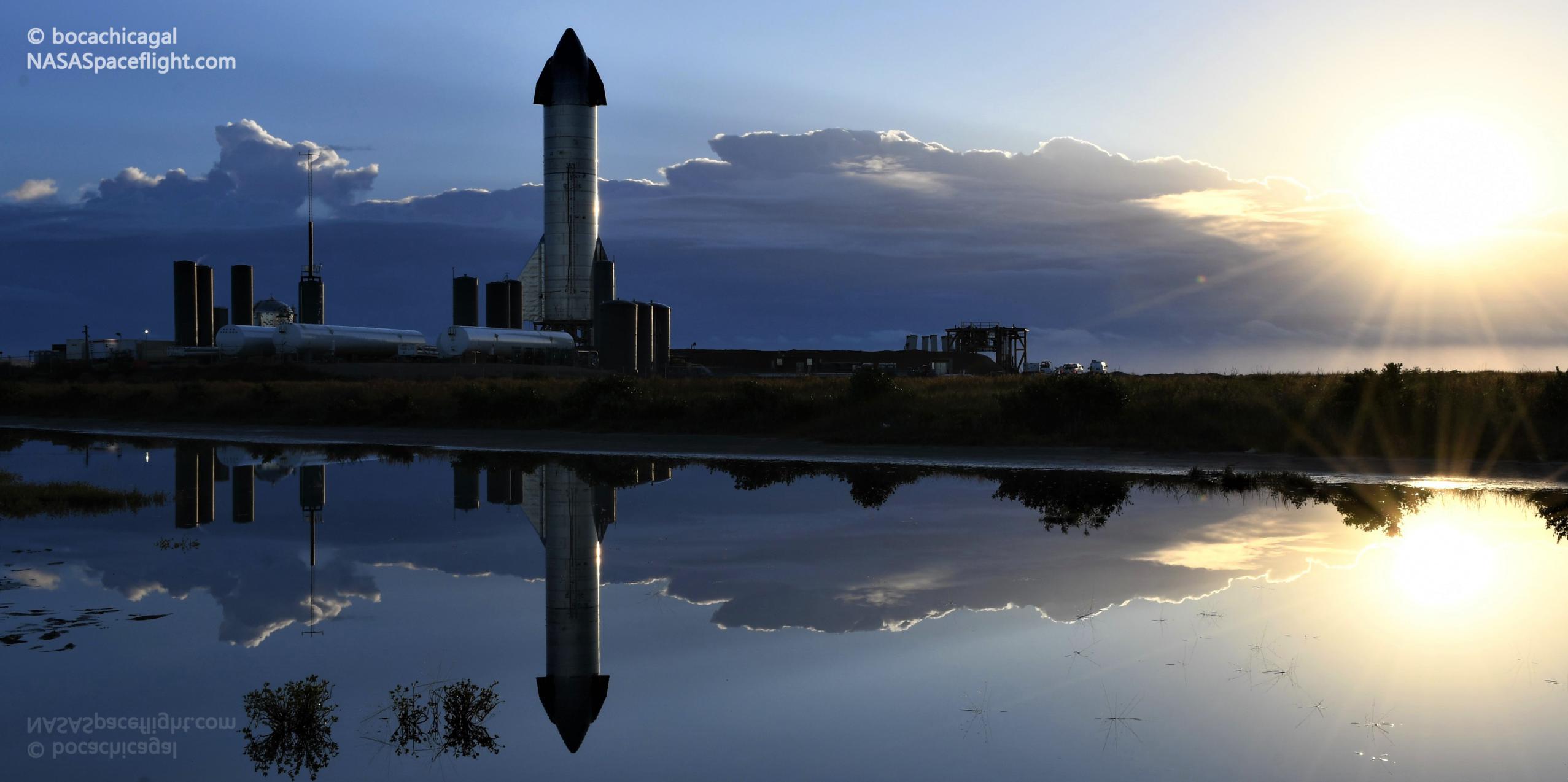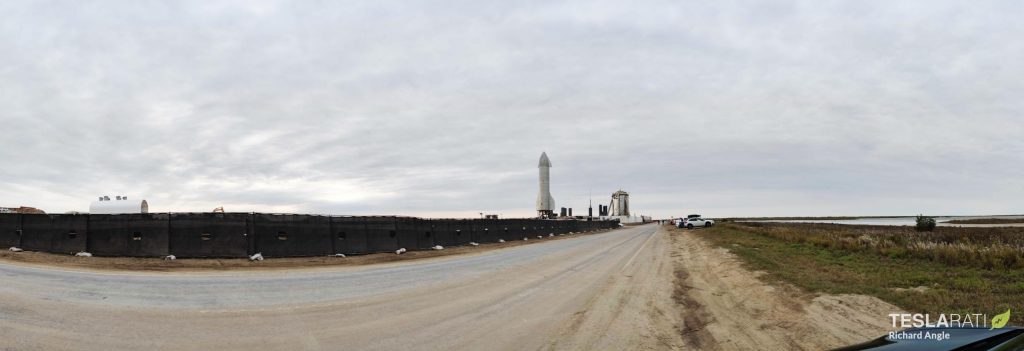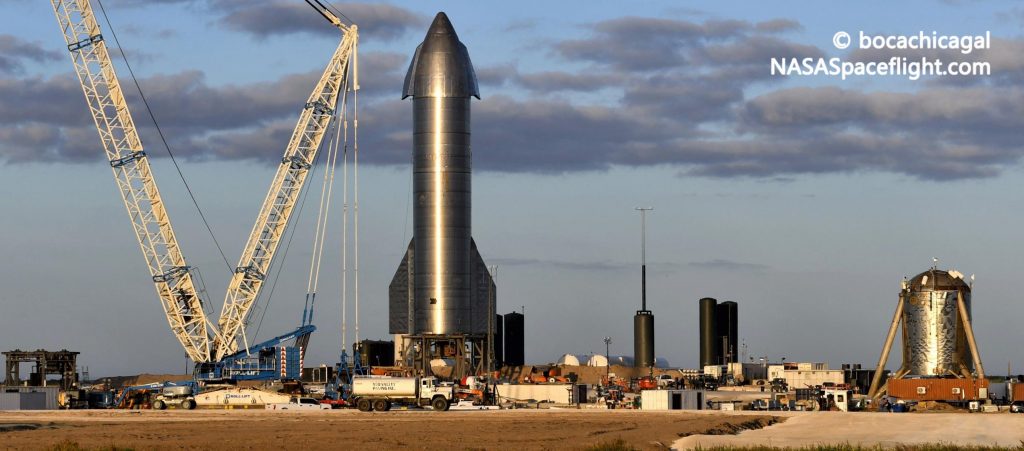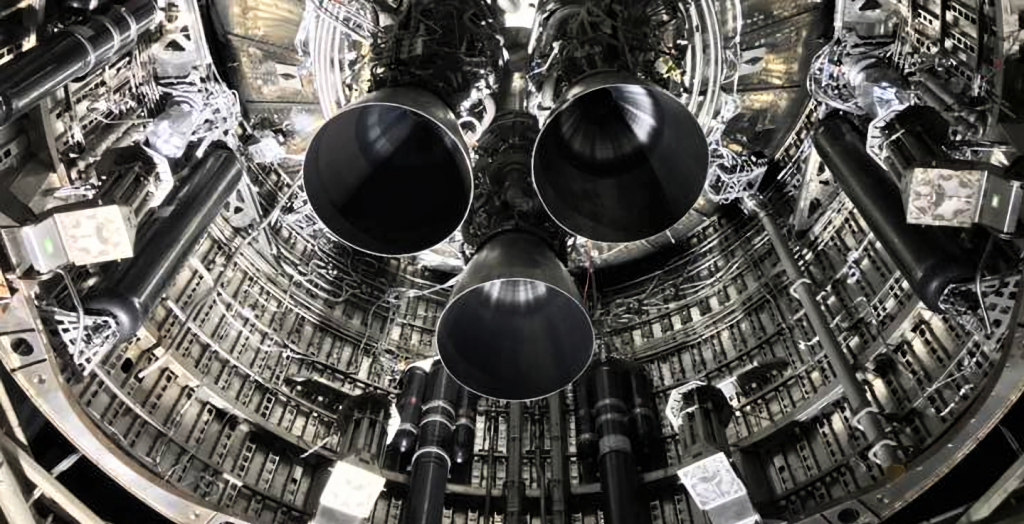

News
(Update: Sunday) SpaceX’s high-altitude Starship launch debut slips to Monday
Update #2: Per new Temporary Flight Restrictions, there’s now a chance that SpaceX has rescheduled Starship’s (now slightly less) high-altitude launch debut on Sunday afternoon, December 6th.
As always with experimental testing, uncertainty remains. Stay tuned for updates as we close in on Starship SN8’s 12.5-kilometer (~7.8 mi) launch debut.
Update: SpaceX’s high-altitude Starship launch debut appears to have slipped to no earlier than (NET) Monday morning, December 7th, and been reduced from 15 km to 12.5 km.
FAA-approved flight restrictions filed on December 2nd were retracted on December 3rd for unknown reasons, ultimately giving SpaceX several more days to prepare Starship SN8 for an ambitious high-altitude launch, coast, freefall, and landing attempt.
Meanwhile, SpaceX has also lowered Starship SN8’s apogee target to 12.5 km (7.8 mi) from 15 km, itself a reduction from 20 km made earlier this year. Why is entirely unclear but it’s likely that the company is in active discussion (and probably arguments) with the FAA, perhaps requiring a compromise to ensure regulatory approval.
It remains to be seen if SpaceX will perform any additional testing over the weekend or if the company will attempt to schedule Starship SN8’s launch debut on Saturday or Sunday. Stay tuned for updates and Elon Musk’s promised SpaceX webcast.

SpaceX has received FAA approval to attempt Starship’s high-altitude launch debut as early as Friday according to a Temporary Flight Restriction (TFR) filed on December 2nd.
SpaceX’s first high-altitude Starship TFR revealed that the crucial flight test is now scheduled sometime between 8 am and 5 pm CST (14:00-23:00 UTC) on Friday, December 4th, with identical backup windows available (and cleared with the FAA) on Saturday and Sunday. Originally scheduled as early as November 30th, the delays are less than surprising given the complexity and unprecedented nature of the flight test facing SpaceX.
Starship serial/ship number 8 (SN8) – the first functional full-height prototype – is tasked with launching from Boca Chica, Texas to an apogee of 15 kilometers (~9.5 miles) and dropping back to Earth to test an unproven approach to rocket recovery.
Often referred to as a bellyflop or skydiver-style attitude, Starship SN8 will attempt to freefall belly-down back to earth, using four large flaps to maintain a stable approach much like skydivers use their arms and legs to control heading and speed. When landing on planets or moons with relatively thick atmospheres, a controlled freefall could save Starship a huge amount of structural mass (no need for wings or actual airfoils) and propellant – a major benefit for what aims to be the largest reusable orbital spacecraft ever built.


Powered by three Raptor engines capable of producing up to 600 metric tons (1.3 million lbf) of thrust at full throttle, SN8’s launch debut will mark Starship’s first multiengine flight – a major milestone for any rocket prototype. SpaceX CEO Elon Musk also recently noted that Starship SN8’s propellant tanks will only be “slightly filled” for its 15 km launch debut, potentially resulting in an extremely healthy thrust to weight ratio at liftoff.
Based on several unofficial estimates, Starship SN8 is also likely to break the sound barrier on ascent, potentially putting the prototype through conditions similar to what an actual orbital launch might see at Max Q (the point of maximum aerodynamic pressure). Further adding to the daunting list of ‘firsts’, SN8’s 15 km debut will be the first Starship hop or flight with a nosecone, making it the first full-scale structural test of a nose section and the methods used to attach it to Starship’s tank section. It’s hard to exaggerate the number of things that could go wrong and the number of ways Starship SN8 could fail during its first flight.
In the interim, SpaceX has taken Starship’s launch delay as an opportunity to perform some kind of additional testing on the evening of December 2nd, involving some kind of cryogenic proof test (using liquid nitrogen) or wet dress rehearsal (WDR; using real liquid methane and oxygen). While there were initial signs that SpaceX would put SN8 through one or several more Raptor static fires before clearing the rocket for flight, it appears that those plans were cancelled earlier this week.
Less testing amplifies the risk that Starship SN8 will fail after liftoff, the probability of which Musk has pegged at ~67%. Regardless, SN8’s launch debut is bound to be spectacular and Starships SN9 and SN10 are nearly ready to take over wherever SN8 leaves off.
Elon Musk
Elon Musk confirms Grok 4 launch on July 9 with livestream event
The rollout will be accompanied by a livestream at 8 p.m. Pacific Time.

Elon Musk has officially confirmed that Grok 4, the latest version of xAI’s large language model, will launch on July 9. The rollout will be accompanied by a livestream at 8 p.m. Pacific Time, hosted on xAI’s official account on X.
xAI goes straight to Grok 4
Back in May, leaks indicated that xAI was getting ready to ship Grok 3.5. Considering Musk’s recent comments, however, it appears that the artificial intelligence startup would be focusing on the large language model’s fourth iteration instead. As noted in a Financial Express report, users on X have sighted references to Grok 4 in the lead up to the update’s launch, such as “grok-4-prod-mimic” and “Grok 4 Code.”
Musk’s Grok 4 announcement comes as AI competition intensifies between major players including OpenAI, Google, and xAI. With Musk’s Colossus supercomputer fully operational in Memphis, xAI appears to be accelerating its AI product roadmap.
Musk pushes Grok toward political neutrality
Grok 4’s launch also follows a recent controversy involving political bias, as noted in a CNN report. Last week, Grok responded to a user on X stating that political violence in the U.S. since 2016 had come more from the political right than the left. The chatbot noted in a later reply that its answer was based on information from sources like Reuters, the Journal of Democracy, and University of Maryland studies.
Musk stated that Grok’s response was a “major fail.” “Major fail, as this is objectively false. Grok is parroting legacy media. Working on it,” he wrote in a post on X. By the end of June, Musk noted that he was “grinding all night with the xAI team” and that they were making “good progress.” He also stated that the model “Will be called Grok 4. Release just after July 4th. Needs one more big run for a specialized coding model.”
News
Tesla opens massive solar Supercharger station in California
The Supercharger opened to customers ahead of Fourth of July weekend, while Tesla continues phase two of construction on the site.

Tesla has officially launched the first several Supercharging posts at a massive station in California, notably including solar canopies and grid-scale batteries to offer completely renewable charging.
Last week, Tesla announced on X that it opened the first 84 Supercharger stalls of a planned 168-stall station in Lost Hills, California. Additionally, the massive Supercharger project features 11MW of solar canopies and 10 Megapack batteries for off-grid charging powered entirely by solar energy.
Tesla completed the first phase of the project just days ahead of the busy Fourth of July holiday weekend, adding that initial construction took just eight months. In addition to the remaining charging stalls, Tesla says it’s building a set of lounge areas, renderings of which can be seen below alongside current photos of the site.
Notably, the site also includes V4 charging posts for the company’s latest available charging speeds, and it’s located near the busy junction between I-5 and Highway 46 in Kern County.
“Thank you [Kern County] and [PG&E] for collaboration and approvals,” Tesla wrote in a follow-up post.

Credit: Tesla Charging | X

Credit: Tesla Charging | X

Credit: Tesla Charging | X

Credit: Tesla Charging | X
Tesla Supercharger Maps for North America, Europe, and Asia pic.twitter.com/0U5r0XRPyo
— TESLARATI (@Teslarati) July 2, 2025
READ MORE ON TESLA SUPERCHARGERS: Tesla launches ultra-fast V4 Superchargers in China for the first time
Testing at the LA Diner, plus Musk update on potential Tesla solar Gigafactory
The huge Tesla Supercharger station completed phase one of construction fairly quickly, especially given how long Tesla has been working on its unique Los Angeles diner, drive-in, and Supercharger location. Still, the company was seen performing some testing at the nearly-completed charging station earlier this month, and will reportedly be holding a job fair.
Elon Musk also responded on Monday morning to a post on X, suggesting that Tesla is “thinking about” building a U.S.-based solar Gigafactory in order to help support increased power needs with AI growth, and to bolster domestic solar production.
Tesla is building a new UFO-inspired Supercharger in the heart of Alien country
News
Tesla driver walks away from major accident with minor injuries
The driver sustained only minor injuries, and the exact cause of the crash remains under investigation.

The driver of a Tesla Model Y survived and walked away from a harrowing accident on Monday in California, only sustaining minor injuries despite the vehicle being impaled by a guardrail.
On Monday morning around 4:34 a.m., the Los Banos division of the California Highway Patrol (CHP) responded to the accident on I-5 near Panoche Road, involving a 23-year-old in a Tesla Model Y. According to a post on social media, the driver veered off the road for unknown reasons in the northbound lane, before crashing directly into the guardrail and impaling the vehicle.
You can read the full message and photos from Los Banos CHP below, as were shared in a Facebook post on Monday afternoon.
This morning a Tesla model y was traveling in the #1 northbound lane of I-5 north of Panoche Rd. For unknown reasons driver allowed V-1 to veer off the roadway, travel through a dirt center divide, and crashed into the fixed metal guardrail. Lucky for the driver he only sustained minor injuries and was able to walk away. Driving a vehicle requires 100% attention to the road. Avoid distractions and focus on driving.

Credit: CHP Los Banos (via Facebook)

Credit: CHP Los Banos (via Facebook)

Credit: CHP Los Banos (via Facebook)
In a statement to SFGate, CHP officer Myles Anderson said that the driver only sustained minor injuries, while no arrests are made and drugs and alcohol are not suspected to have been involved. The report also notes that Tesla’s “cruise control and lane assistance features” were activated, according to Anderson. However, it’s not entirely clear if this is referring to Supervised Full Self-Driving (FSD), or to the cruise control and lane assist features baked into Autopilot.
At the time of writing, CHP has not yet responded to Teslarati’s request for clarification and additional details on the matter.
Tesla Crash Safety Ratings across its lineup: pic.twitter.com/ny30R7ceji
— TESLARATI (@Teslarati) July 1, 2025
READ MORE ON TESLA SAFETY: Tesla rolls out crucial new safety feature aimed at saving children
The news comes after Tesla has touted its vehicles as incredibly safe for many years. In December, for example, the company highlighted receiving top safety scores from regulators on four different continents throughout the world, including from the National Highway Traffic Safety Administration (NHTSA) and the Insurance Institute of Highway Safety (IIHS) in the U.S.
Tesla has also listed the goal of making its vehicles the safest on the road throughout the years, both in the overall design of its vehicles and in its Autopilot and Full Self-Driving (FSD) programs.
Tesla Model 3 ranks as the safest new car in Europe for 2025, per Euro NCAP tests
-

 Elon Musk1 week ago
Elon Musk1 week agoTesla investors will be shocked by Jim Cramer’s latest assessment
-

 News2 weeks ago
News2 weeks agoTesla Robotaxi’s biggest challenge seems to be this one thing
-

 News2 weeks ago
News2 weeks agoWatch the first true Tesla Robotaxi intervention by safety monitor
-

 Elon Musk2 weeks ago
Elon Musk2 weeks agoA Tesla just delivered itself to a customer autonomously, Elon Musk confirms
-

 News2 weeks ago
News2 weeks agoTesla Robotaxi rollout proves that Elon Musk still delivers, even if it’s late
-

 Elon Musk2 weeks ago
Elon Musk2 weeks agoxAI welcomes Memphis pollution results, environmental groups push back
-

 Elon Musk2 weeks ago
Elon Musk2 weeks agoElon Musk commends Tesla team on successful Robotaxi launch
-

 Elon Musk2 weeks ago
Elon Musk2 weeks agoElon Musk confirms Tesla Optimus V3 already uses Grok voice AI


















